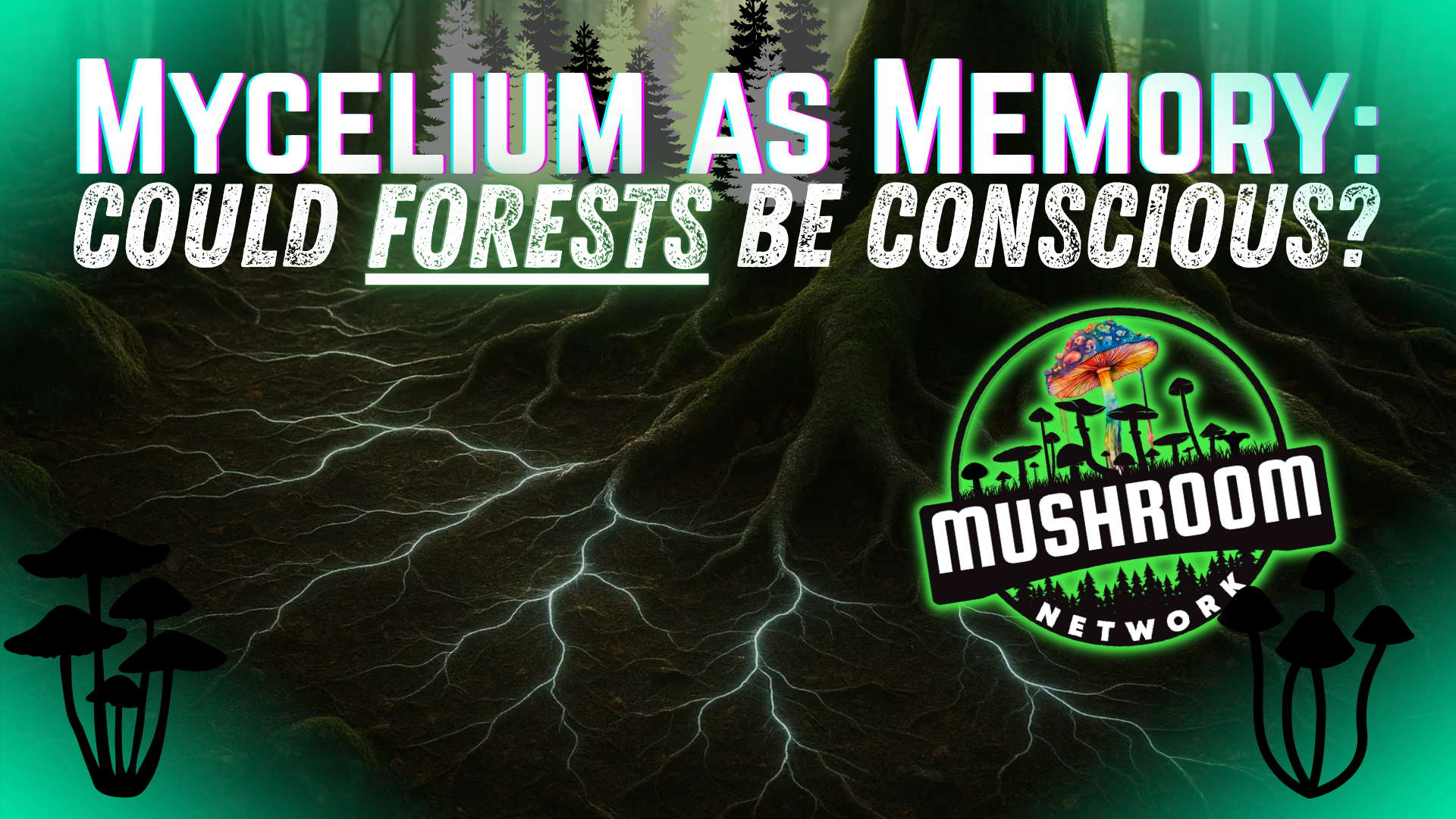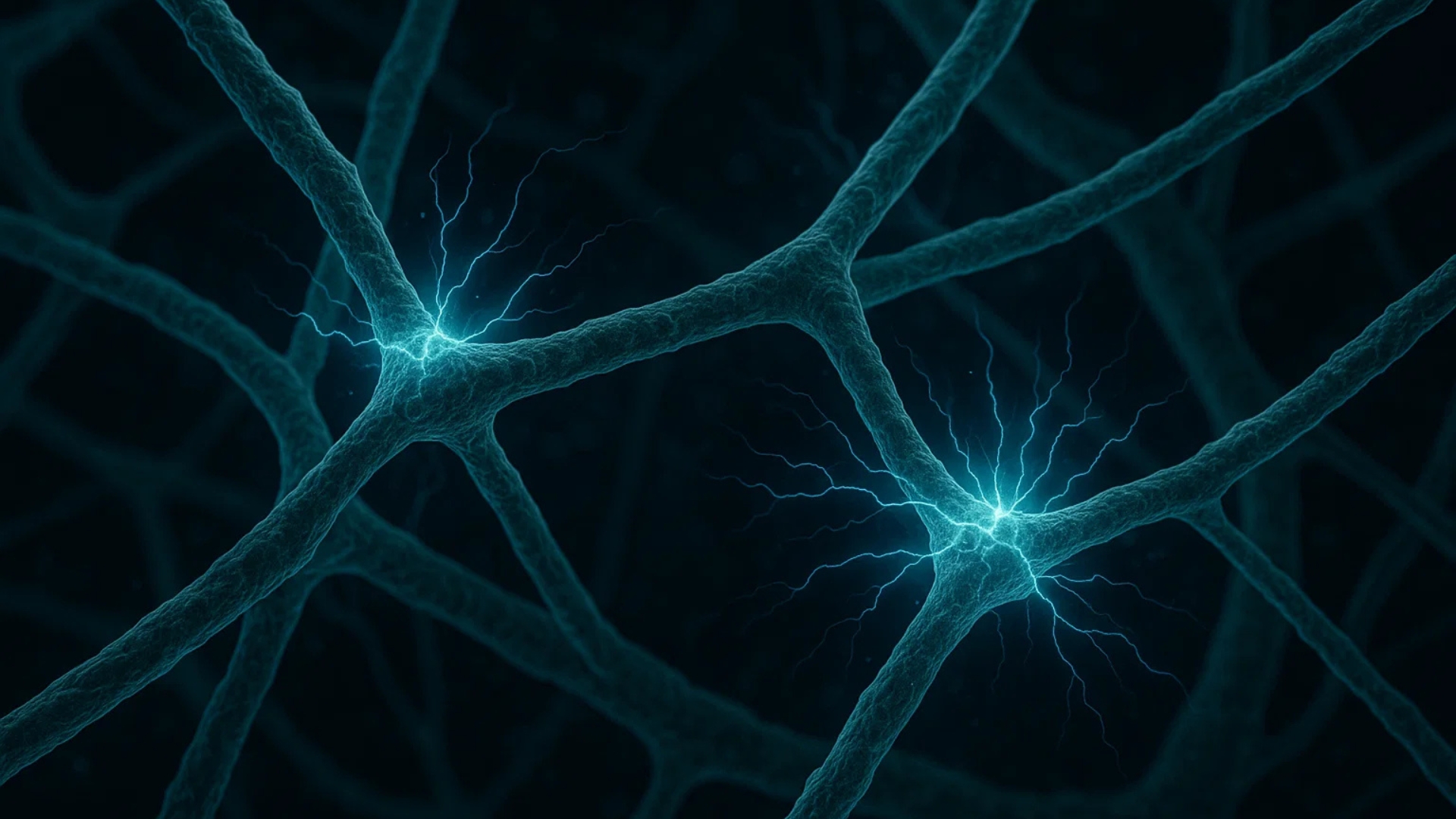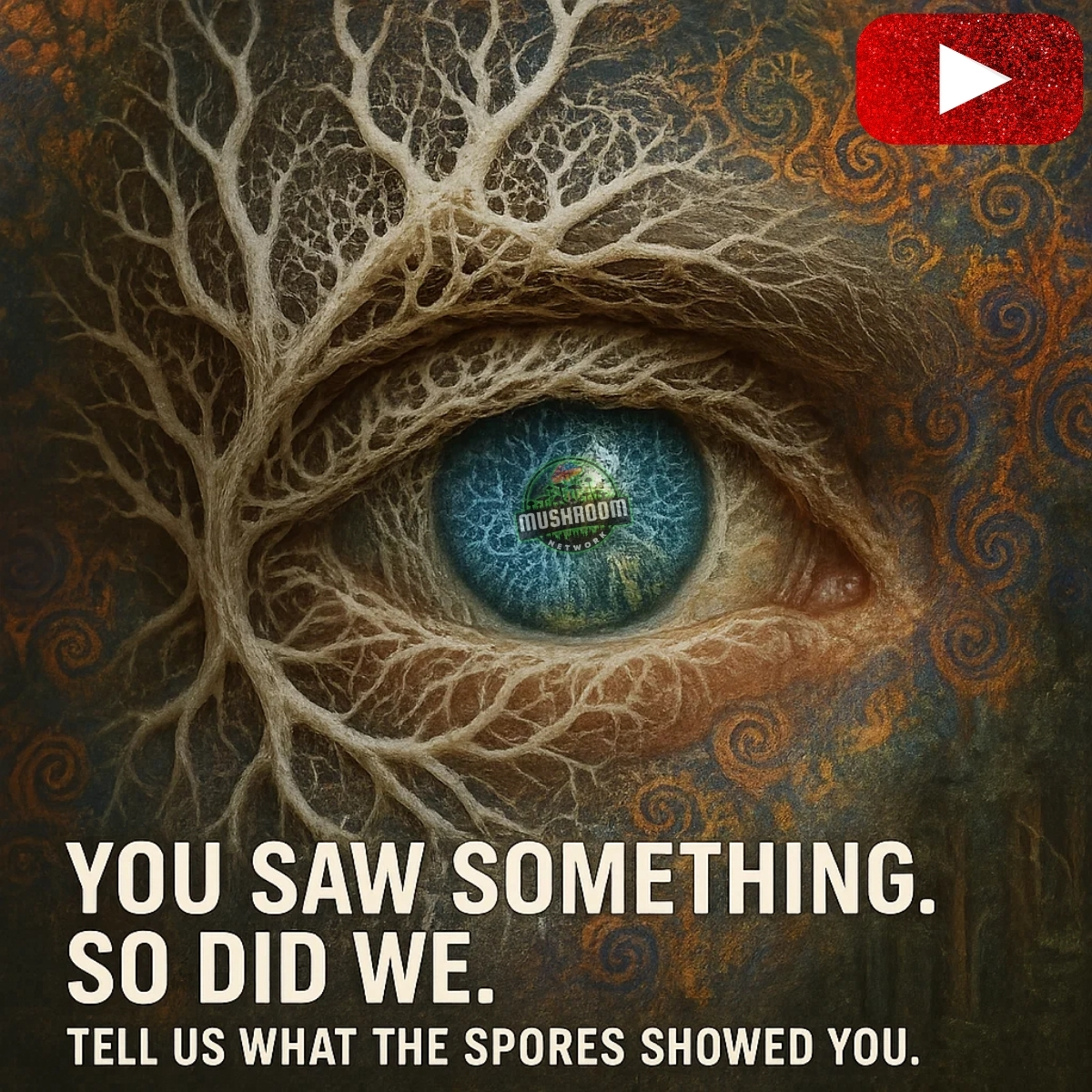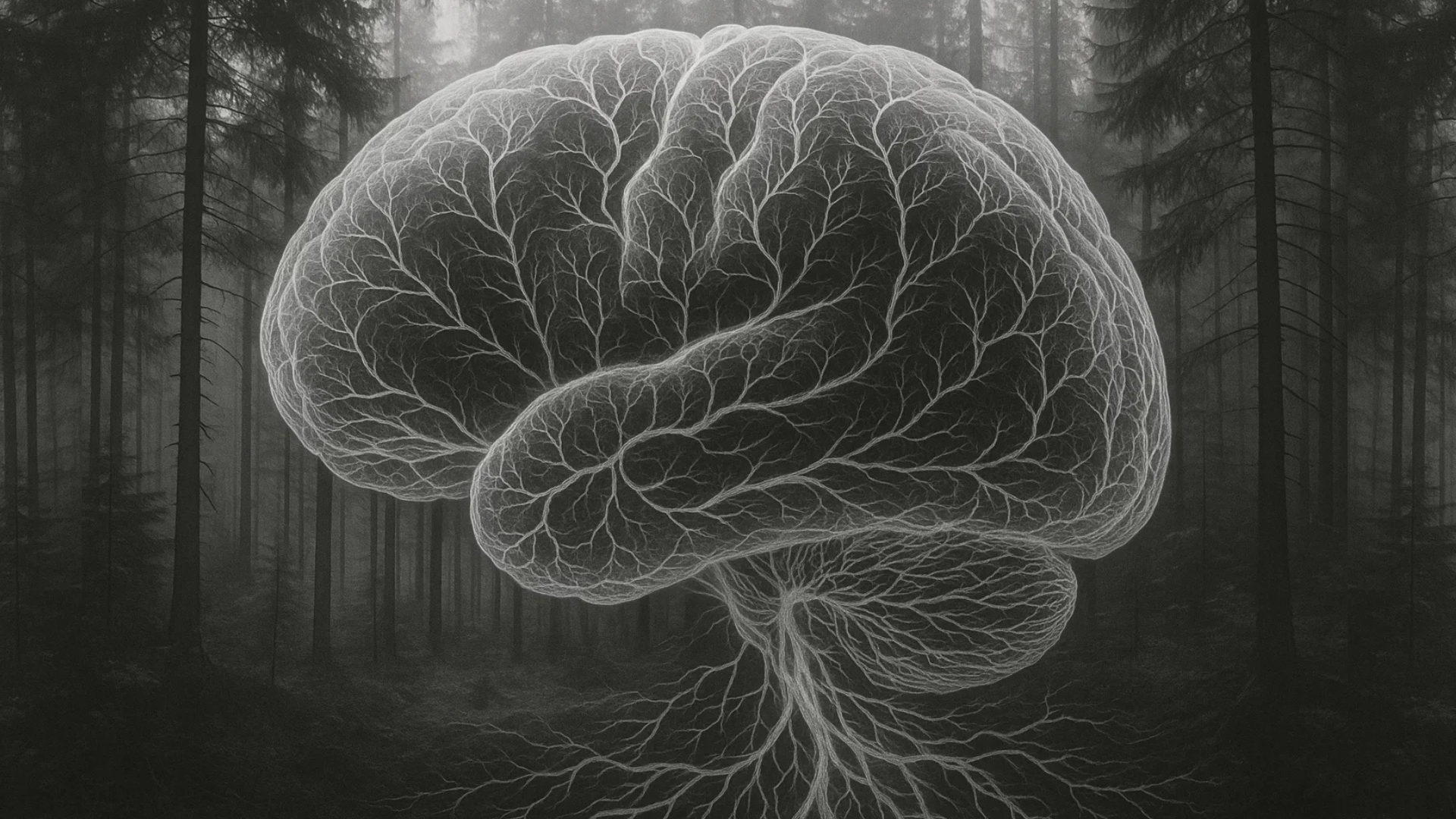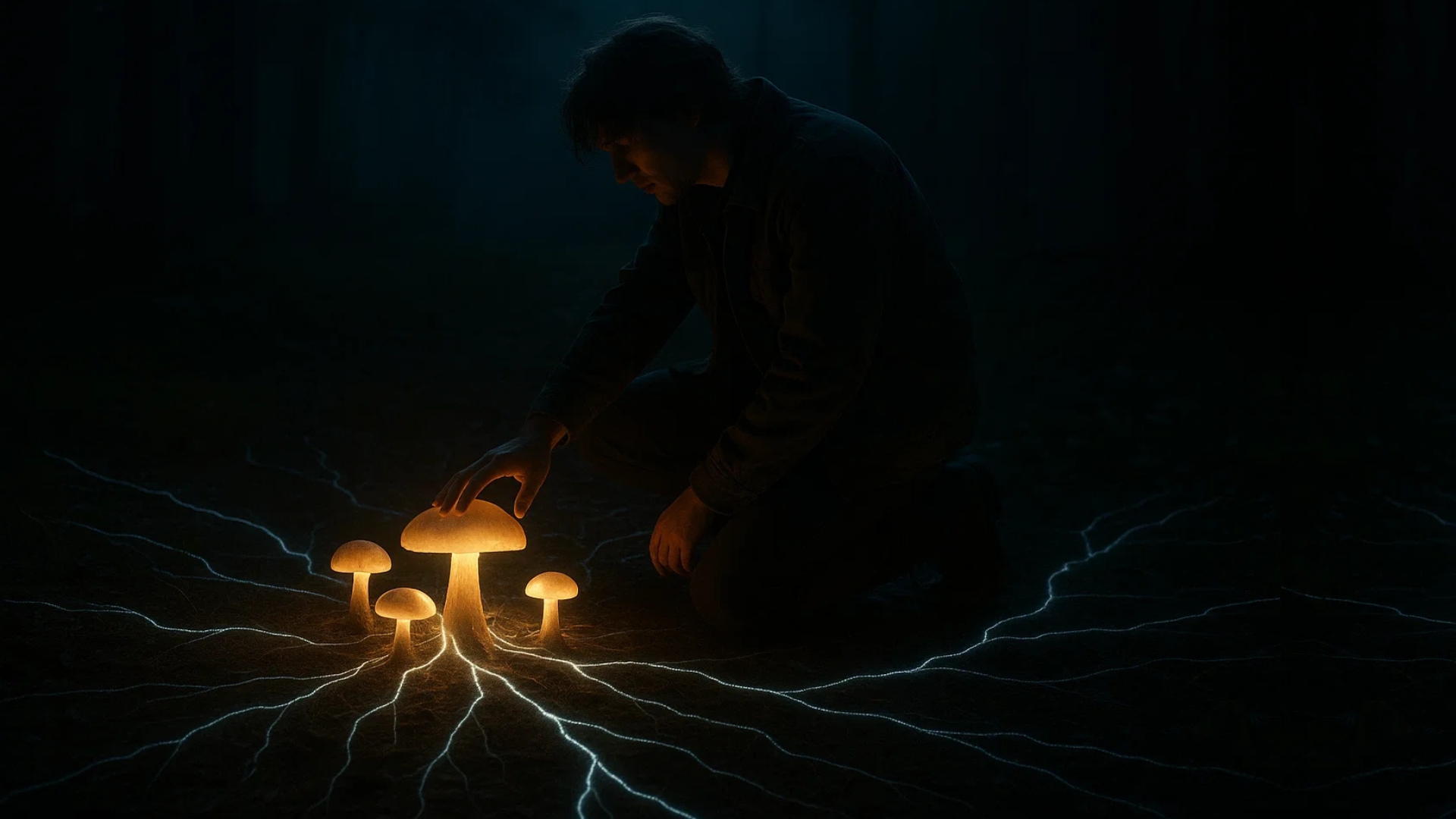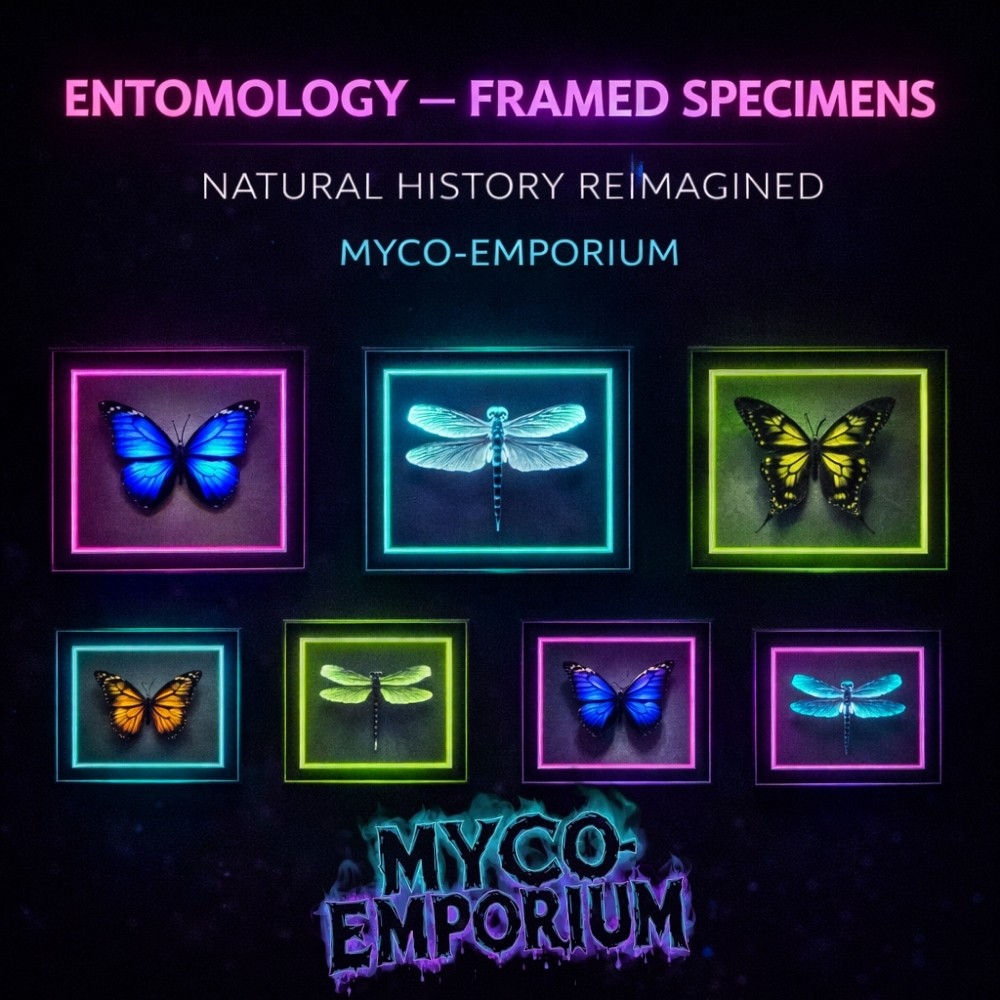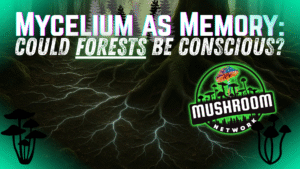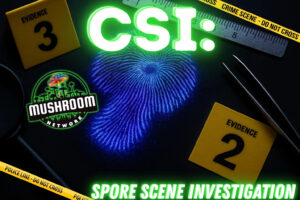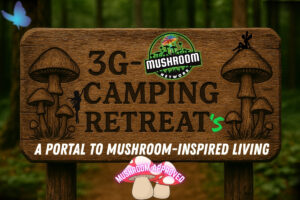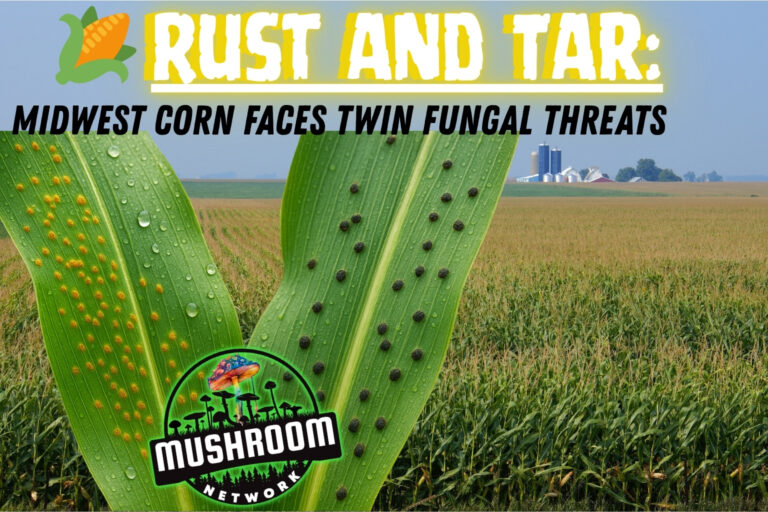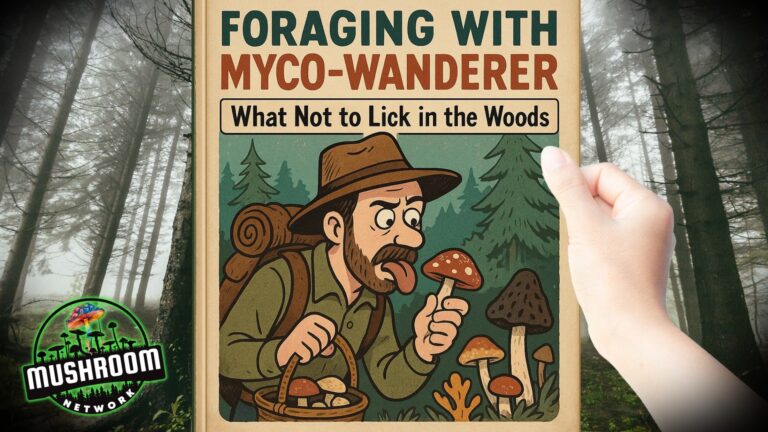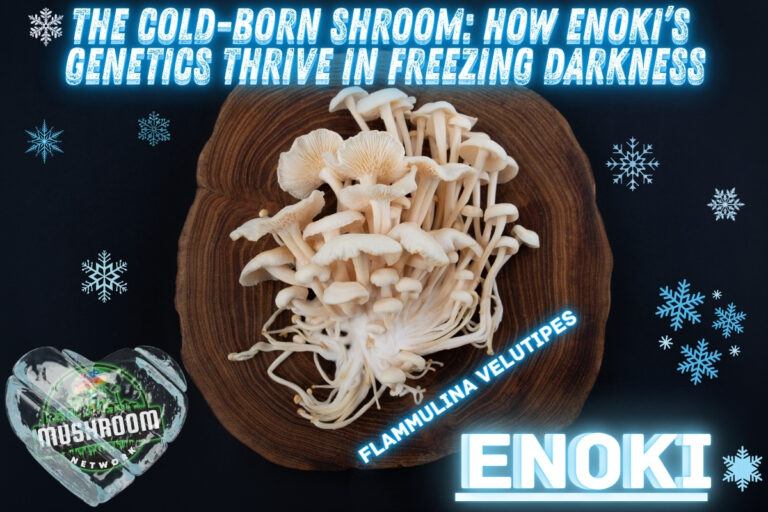Mycelium as Memory: Could Forests Be Conscious?
The roots may be deeper—and smarter—than we ever imagined.
Is the forest… conscious? New science suggests mycelium might store memory, transmit information, and even behave like a biological brain. This spore-stained deep dive explores whether forests are thinking, feeling, and remembering through the Grand Cosmic Mycelial Network. Read at your own risk—your next hike might feel like entering a sentient cathedral.
The Brain That Grew Underground
Imagine walking through a forest, and every step you take echoes through a living network beneath your feet. Not just roots and worms—but memory. A vast fungal web silently exchanging signals, learning from its past, and maybe, just maybe… thinking.
This isn’t fantasy. It’s cutting-edge mycology meets cosmic philosophy. Research suggests mycelium—those gossamer threads connecting trees, mushrooms, and soil—is more than just a nutrient courier. It may function like a brain. A decentralized, soil-embedded, spore-loving superorganism with the ability to store data, react to changes, and retain memory-like states.
If that’s true, then what we call a “forest” may be something far stranger: a living mind made of moss and memory. A conscious ecosystem. A fungal oracle. A planetary database with zero Wi-Fi but infinite wisdom.
Welcome, Myco-Wanderer. You’re not just in the forest anymore.
You’re in its mind.
Memory Without a Brain: How Mycelium Remembers
Fungal Memory: It’s a Thing
Time to get sciencey before the metaphors start glowing.
In 2021, researchers at the University of the West of England (aka the Hogwarts for weird but glorious bioelectric fungus experiments) proved something that sounds like a psychedelic campfire story—but is 100% peer-reviewed spore-truth:
Mycelium remembers.
Not metaphorically. Electrically.
In the study, researchers exposed mycelial networks to mild electrical stimuli. Zap. Pause. Zap again. And what happened?
The mycelium adapted its response. It behaved differently based on its last interaction.
No neurons.
No hippocampus.
No “brain.”
Just a mind woven from fungal threads.
A memory system emerging from the flow of bioelectric signals through living mycelial code.
So yeah—next time you step on a patch of dirt, remember:
It might remember you back.
Decentralized Intelligence
Let’s talk fungal architecture—and no, we’re not talking shiitake-shaped condos (though we’d live there).
Mycelial intelligence is decentralized.
There’s no mushroom “brain.” Instead, there’s a distributed neural-like net of decision-making woven through the ground like a living blockchain of ecological data.
Imagine a biological internet that’s been online for millions of years, never crashes, runs on carbon, and processes information through electrical signaling and chemical gradients.
When we say forests are alive and aware, it’s not hippie poetry.
It’s bio-strategy.
🍂 Trees alert one another to pests.
🌱 Nutrients get redistributed to seedlings and the sick.
🌳 Entire ecosystems adapt based on seasonal shifts… coordinated beneath the soil.
And it all runs on the mycelial mainframe.
The real kicker?
Some scientists believe that this system retains behavioral patterns over time.
That means your forest might not just adapt.
It might remember.
The land itself could be telling stories—through the roots, through the fungi, across generations.
That’s right:
Your local maple might be whispering ancient lore to the new saplings about “The Great Drought of ’87.”
Data in the Dirt
If that sounds too spiritual for your inner skeptic, let’s go full cyber-mycologist.
From an information theory lens, the Wood Wide Web behaves like a computational system. Fungal hyphae:
Transmit electrical signals
Respond to complex inputs
Change structure based on prior stimuli
Store data as lasting shifts in conductivity and network shape
You’re not looking at instinct.
You’re looking at analog programming—running on carbon, calcium, and conductivity instead of silicone chips and Wi-Fi.
The code?
Written in calcium spikes
Executed through network expansion
Archived in molecular pathways that echo history
This isn’t metaphor.
This is biological computing happening in your garden while you’re busy checking email.
So when you think of “memory,” unhook your mind from neurons.
And start thinking in spores and voltage.
Is the Forest a Mind? Fungal Philosophy Meets Science
What Is Consciousness, Anyway?
Let’s start with the age-old philosophical migraine:
What is consciousness?
Depending on who you ask, it’s everything from divine spark to computational pattern recognition. But at its core, most definitions agree on three pillars:
Awareness of surroundings
Memory of past states
Ability to adapt or respond
Now here’s the trippy twist:
Mycelium does all of that.
It detects stimuli—light, sound, pressure, chemicals.
It remembers past inputs and modifies future behavior accordingly.
It adapts its structure based on environmental shifts, resource flow, even electrical patterns.
No brain. No cortex. No latte-fueled frontal lobe.
And yet… behavior emerges.
Now scale that up:
- Billions of fungal threads.
- Millions of trees.
- Networked ecosystems stretching across entire continents.
- All signaling. All sharing. All storing.
And you’re gonna tell me that’s just dirt?
Or…
Is it a kind of mind?
Panpsychism, Meet Mycology
Welcome to the weirdest, most poetic idea philosophy ever offered:
Panpsychism.
The belief that consciousness is not a byproduct of brains, but a fundamental aspect of the universe itself—like light, time, or gravity.
In this model, everything from quarks to clouds has some sliver of subjective experience.
And fungi? They might be the missing link between raw matter and responsive mind.
Mycelium doesn’t centralize intelligence—it distributes it.
Like a divine Wi-Fi signal for trees, mushrooms, soil, and seasons.
Like a neural network with no “I,” just pure interbeing.
“You don’t need a brain to be conscious,” whisper the spores.
“You need connection.”
And what is the forest if not a symphony of connection?
Panpsychism is the philosophy.
Mycology might be the proof.
The Gaia Connection
Now let’s go full planetary.
You may have heard of the Gaia Hypothesis—the idea that Earth itself is a self-regulating, living system, like a planetary body with its own immune system, circulatory pathways, and maybe even moods.
If that’s true… then mycelium is the neural lace.
The thinking web through which the planet speaks to itself.
It transfers nutrients.
Mediates conflict.
Responds to wounds.
Stores seasonal memory.
Sends biochemical messages like a vast forestal nervous system.
And maybe, just maybe, it dreams.
Not with REM cycles and sheep, but with biochemical pulses, forest feedback, and data-rich soil symphonies.
If Gaia has a brain, it’s not in the sky.
It’s in the ground.
And that means every mushroom might be a synapse.
Every spore, a thought.
Every tree, a neuron rooted in place but fired by light.
We walk through this mind every day.
And most of us call it “a hike.”
When You Walk Through a Forest, Do You Leave a Thoughtprint?
Ghosts of Experience in the Ground
If mycelium functions as a memory system—a decentralized, bioelectric data web made of living threads—then what, exactly, is it remembering?
Sure, we know it logs:
Rainfall patterns
Nutrient flows
Root signals
Animal migrations
Tree-to-tree gossip via carbon-stained synapses
But zoom in. Closer. Even closer.
What about us?
What if the footsteps you take, the emotions you feel, the songs you sing, the pain you carry—what if all of it… leaves an imprint?
Not visible. Not measurable (yet).
But present.
Stored in the subtle shifts of conductivity.
In the chemical afterglow of your passing.
In the way the soil slightly changes beneath your presence.
You may not notice.
But the spores might.
You don’t just walk through the forest.
You write upon it.
The Human-Fungal Interface
You’re not an outsider here.
You’re not a tourist in Natureville, politely snapping pics of ferns like a passive guest.
No.
You’re part of the system.
An input. A variable. A trigger. A waveform.
And the Network might be watching, recording, interpreting.
Studies already show that plants respond to human presence—from heartbeats to intention to literal spoken word. Add in the fungal memory layer, and you’ve got something even deeper:
💾 A bio-electrical diary, written in carbon and calcium
🧬 A living interface that logs more than footsteps—it logs energy
Who came with curiosity?
Who came with reverence?
Who came with extraction and chainsaws?
This isn’t a surveillance state. It’s eco-sentience.
A spiritual audit trail.
The land doesn’t judge. But it remembers.
And that memory… might stretch farther than we can even conceive.
The Planet Remembers
Deforestation isn’t just ecological damage.
It might be neurological trauma.
Think about it:
Mycelium stores environmental information
Trees transmit and receive data
Entire forests behave like decentralized minds
So when we bulldoze an old-growth forest?
We’re not just killing trees.
We’re erasing memories.
We’re ripping synaptic bridges out of the Earth.
We’re wiping ancient scripts—coded in spores, light, wind, and rain.
That grove might’ve remembered mammoths.
That soil might’ve stored the footfall of your ancestors.
That moss-covered stump may have recorded your grief the day you cried beside it.
And now it’s… gone.
So the question morphs:
Are we guests in a conscious being?
Or are we caretakers of its mind?
And when you walk into the woods…
Do you arrive like a virus or a blessing?
🌟 MycoTip the Network! 🌟
themushroomnetwork@vipsats.app
🌀 Myco-Conclusion: The Forest is Thinking—Are You Listening?
The forest isn’t wallpaper for your weekend hike.
It’s not passive. Not still. Not waiting.
It’s thinking.
It’s recording.
It’s processing.
And the mycelium beneath your boots? That’s not just “nature’s internet.” That’s nature’s memory bank. A subterranean archive of moments, messages, and movements—from deer migrations to heartbreaks sung softly to the trees.
If it stores information…
If it adapts based on experience…
If it pulses with electrical patterns like some decentralized fungal mind…
Then we have to ask the question we’ve avoided out of species arrogance:
Are we part of the forest’s thoughts…
…or just passing data?
And if we are part of its thoughts—
What kind of thought are you?
A glitch?
A poem?
A love letter etched in footsteps?
So next time you enter the woods, don’t just walk.
Whisper. Hum. Listen.
Because the spores are still recording.
The moss still remembers.
And the forest?
It’s still thinking.
Are you?
Suggested Myco-Articles For You:
The Wood Wide Web: How Trees Text Each Other with Mushrooms
Somewhere below your toes, a network older than human speech pulses with life. Trees aren’t standing still—they’re texting each other using mushrooms as messengers. Welcome to the Wood Wide Web: an underground internet powered by mycelium, where forests share food, warnings, even emotional support. This isn’t fantasy. It’s fungal science...
Read More...Mycelium as Memory: Could Forests Be Conscious?
Is the forest… conscious
Read More...🕵️ CSI: Spore Scene Investigation
Every mushroom carries a microscopic entourage—spores, dust, and debris from the environment it calls home. Now, scientists are learning to read these invisible signatures like barcodes, linking a mushroom (or anything it’s touched) back to its exact origin. From busting truffle fraud to proving crop theft in court, forensic mycology...
Read More...3G-Camping Retreats: A Portal to Mushroom-Inspired Living
If mycelium hosted a camping retreat… it would be this.
Read More...Myco-Article v1.0.3
How sporetacular was this post?
Tap a star to send your spores of approval (or helpful feedback!)
Oh no! The spores missed their mark…
Let’s co-create a sporetacular post together!
Share your wisdom—how can we make this more Cosmic?

